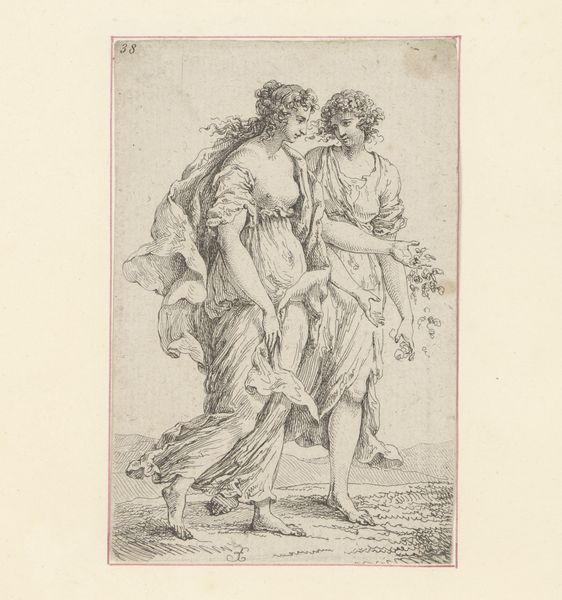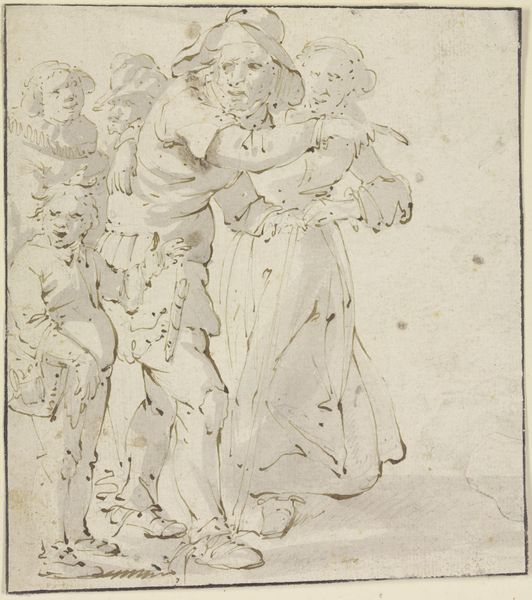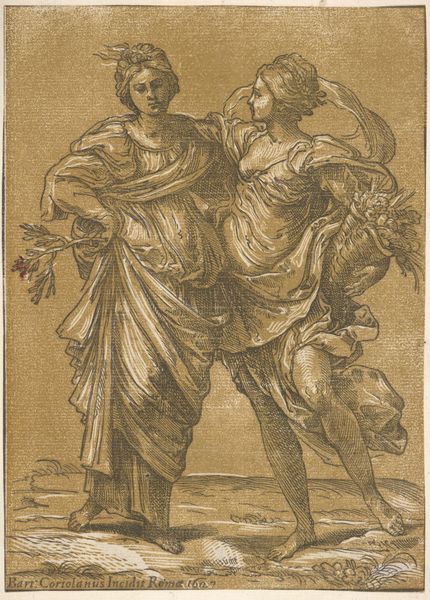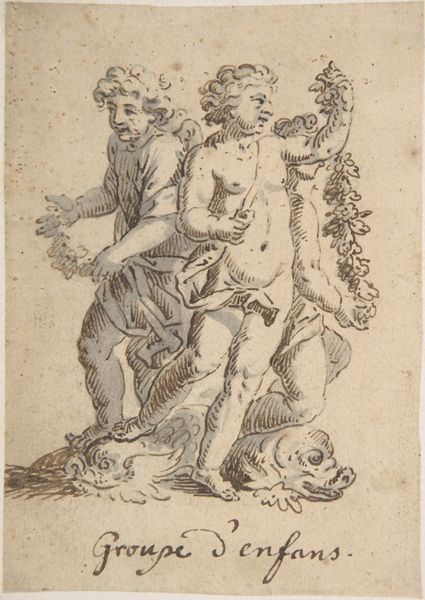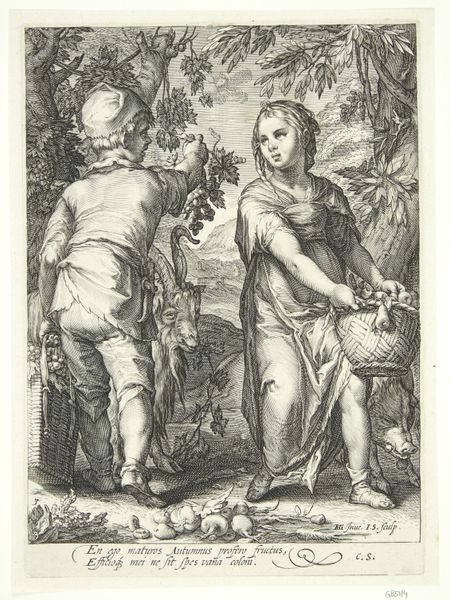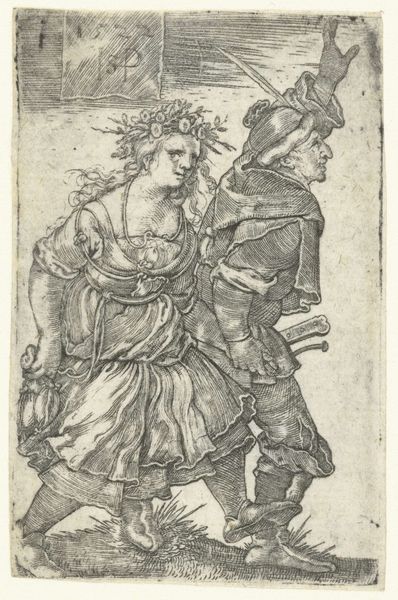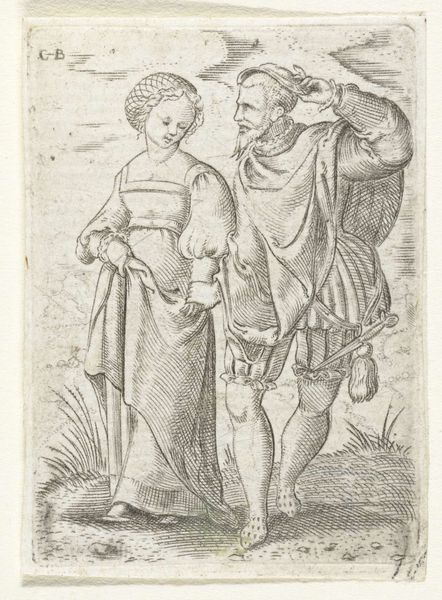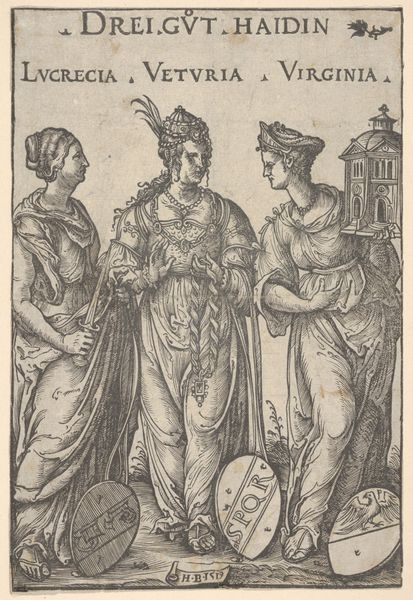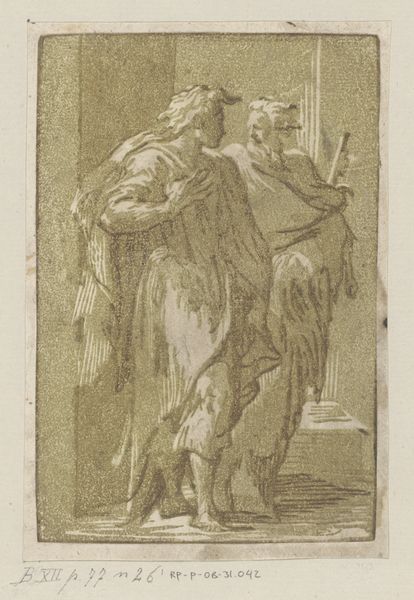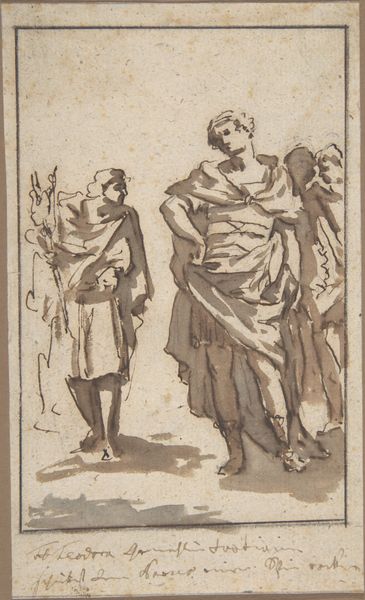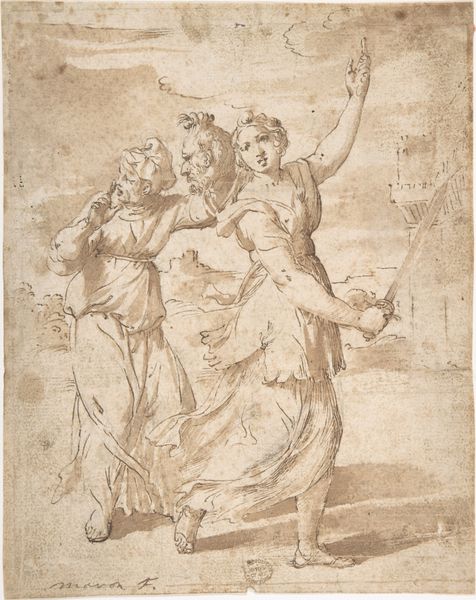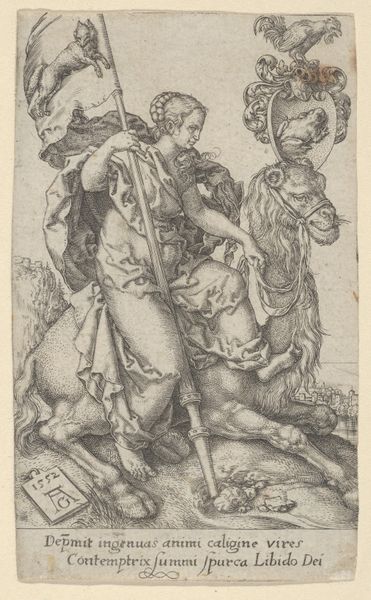
print, etching, engraving
#
allegory
#
baroque
# print
#
etching
#
landscape
#
figuration
#
form
#
line
#
history-painting
#
engraving
Dimensions: height 215 mm, width 153 mm
Copyright: Rijks Museum: Open Domain
Curator: "Overvloed en Vrede," Abundance and Peace. This print, made using etching and engraving techniques, comes to us from the period of 1585 to 1692, and while its author remains anonymous, its message speaks volumes. Editor: The overwhelming impression is one of gentle hope, a fragile tranquility. Those figures, draped so classically, almost float against the barely-there landscape. It's delicate, like a whispered promise. Curator: Absolutely. We see a baroque aesthetic here, translated into the graphic arts. The lines, while precise, give the forms a subtle, idealized quality. There is such an interplay of line and form to express this allegory of peace. Editor: I keep returning to the figures. The woman holding the overflowing cornucopia—she embodies summer in my mind. Generous, ripe. But the other, with her olive branch… there's a certain wistfulness in her gaze. A quiet understanding of fragility of it all. Curator: Precisely, the inclusion of what appear to be historical emblems on the bottom speaks to a cultural longing for prosperity and accord, reflecting desires during periods of upheaval. We must not see this outside of that longing for peace. Editor: The choice of etching and engraving—the artist's touch feels so immediate, so personal, even though it's an anonymous piece. Did these graphic works function differently from painting, for instance? Curator: Graphic works allowed for much wider distribution of ideas. Printmaking like this facilitated dialogue; allowing these ideas to spread, becoming part of social consciousness through image sharing, essentially a 17th-century meme. Editor: Which really makes you consider how powerfully images shape not only aesthetics but also shared societal values. Thinking of this as a "meme" reframes our appreciation entirely. Curator: Exactly, art participates in shaping how we construct our understanding of the world around us. "Overvloed en Vrede" becomes a window into historical aspirations, continuing to speak today. Editor: Indeed. Next time I see a field of flowers, maybe I will understand what a longing it is, versus simple natural pleasure.
Comments
No comments
Be the first to comment and join the conversation on the ultimate creative platform.
